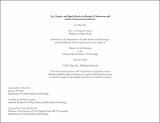| dc.description.abstract | There is a growing overlap between the fields of urban planning, art, and social justice. Projects within the realms of urban planning and socially engaged art seek to bring about changes that redistribute socially valued resources and opportunities, especially among racial and spatial lines. This thesis analyzes how socially engaged public art accomplishes these goals of spatial justice in Boston and Seattle’s historic Chinatowns. Building off of planning scholars Rashad Akeem William and Leonie Sandercock’s work framing the role of affect and emotions in healing planning conflicts, I will analyze how these projects support their community’s efforts to repair past spatial harms, and what distinguishes their function from other forms of political and social activism. Using a case study approach, I present a series of research findings from interviews with individuals who facilitated, created, and/or participated in public art projects in Seattle’s International District and Boston’s Chinatown.
Through my research, I illustrate the unique capacity of public art to influence the important emotional and relational aspects of transformation, and the opportunity that public art presents for residents to directly shape the built environment. Public art, as a uniquely place-specific art form, offers an opportunity for communities pursuing spatial justice to shift the affective aspects of transformation and engage in the radial reimagination of how power is distributed in space. Art is an important and often underutilized strategy in the spatial justice toolkit, and this thesis presents opportunities for artists, community organizers, and planners to think creatively about how art can support their efforts to disrupt racial planning, dismantle White supremacy, and support the continued flourishing of urban communities. | |
